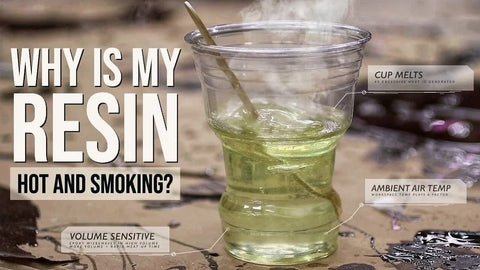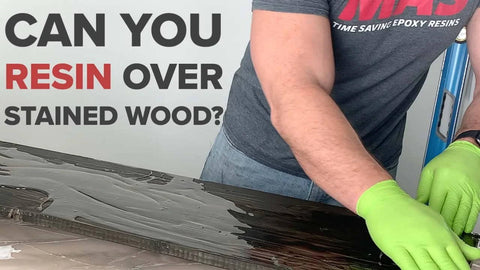Why is my epoxy not hardening?
There are numerous reasons why resin can cure improperly. If you found this page you were probably thinking… Why is my resin flexible? How long does resin take to dry? This article will help explain the main culprits for a tacky or improperly cured epoxy resin pour!
Mix Ratio
Each system is a two part epoxy meaning Part A & Part B are mixed to start a chemical reaction binding the two parts together. During this process heat is released which is called an exothermic reaction. It is very important to get the parts measured and mixed properly so the two components can properly shake hands and begin the binding process. If the ratio is off more than 10% the reaction can simply stall out or never even begin.
Pigment
Pigment can certainly enhance and add incredible artistic expression in your pours, however adding too much pigment into the mix can disrupt the chemical reaction. You never want to exceed 5% pigment to the overall volume of the epoxy you are coloring.
Epoxy Cure Time
The cure time is very different than the working time, de-mold time or recoat time. It’s important to take into ambient air temperature into consideration as it can play a significant role in how long your epoxy resin takes to reach its full mechanical and physical properties.
All MAS Epoxy Resin Systems are designed to cure at room temperature. After the chemical reaction has finished at 70F you can expect your project to reach its full cure in 5-7 days. That time can decrease if the environment is warmer and drastically increase if its colder.
Unmixed Resin
Play it safe NEVER use the last drops from your mix cup!
When calculating the amount of resin needed for a project, factor in 5% waste, this will be the epoxy resin stuck to the sides of the mixing cup, the mixing stick, ect. Epoxy resin by nature is inherently sticky and when you pour Part A in, what is touching the sidewalls of your mix container is pure Part A when you add Part B, it’s pure Part B touching that part. When you begin mixing, the material touching the sidewalls is not likely getting the same blending action as the material in the center of the cup, it’s critical to scrape the sidewalls and bottom of your mixing container to ensure you get as much material as possible into solution. You can go a step further and pour your mixed solution into another clean mixing cup and stir a bit longer, that will significantly reduce the odds of any unmixed Part A or Part B being in your final solution.
Low Ambient Air Temperature
In an ideal world every workspace would sit at 70-72F however in a real world application that isn’t always the case. The cooler the air temperature, the longer the work time and cure time will become. At a certain point the chemical reaction will stall out or never generate enough heat to catalyze.
Improper Mixing
Improper mixing or stirring is likely the leading cause of tacky or soft cure. When mixing you want to scrape the sides of the container as well as the bottom. Some people will then pour the mixture into a new container and continue mixing to ensure a consistent mix. The bottom line, a thorough mix will ensure the best results so when you think it is completely mixed, mix just a bit longer!
Cover Photo Courtesy of Kelly Johnson





Comments (0)
There are no comments for this article. Be the first one to leave a message!